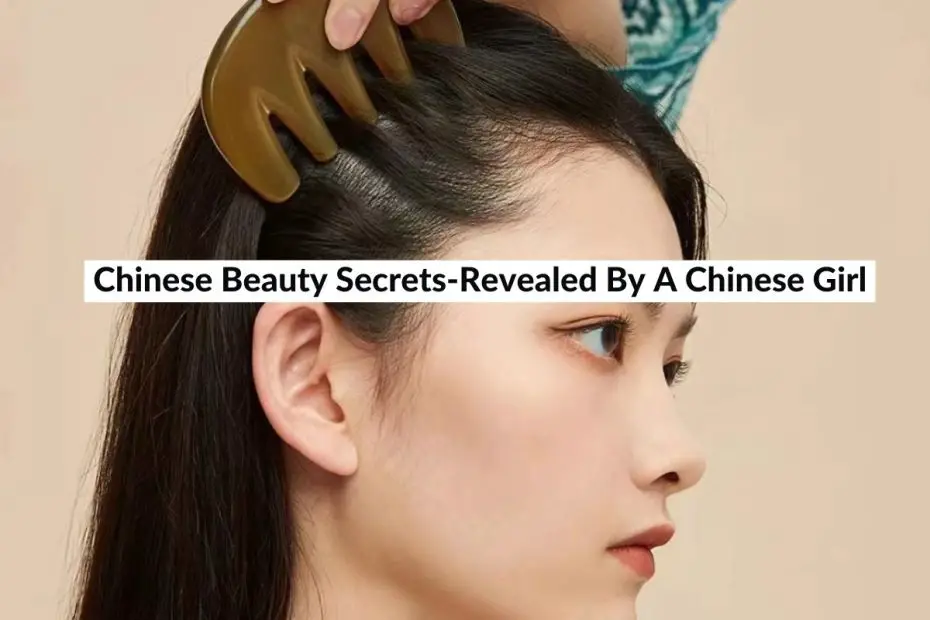When it comes to skincare, East Asia is known for being at the forefront. Korean beauty popularized the concept of “cloudless skin” and the famous ten-step skincare routine, while Japanese beauty sets high standards with its science-driven formulas and unique textures.
China, on the other hand, has ancient beauty rituals that offer surprising skincare benefits. We can learn a lot from Chinese beauty traditions, as exemplified by the jade roller, which has become synonymous with beautifully sculpted skin. Other massage and acupressure tools like Gua Sha also originate from China.
Ancient Chinese Beauty Secrets Skin
Chinese women prioritize face shapes over makeup, considering egg-shaped or v-shaped chins as the most beautiful.
That’s why facial sculpting methods and lymphatic drainage techniques to reduce puffiness are highly valued in Chinese skincare routines.
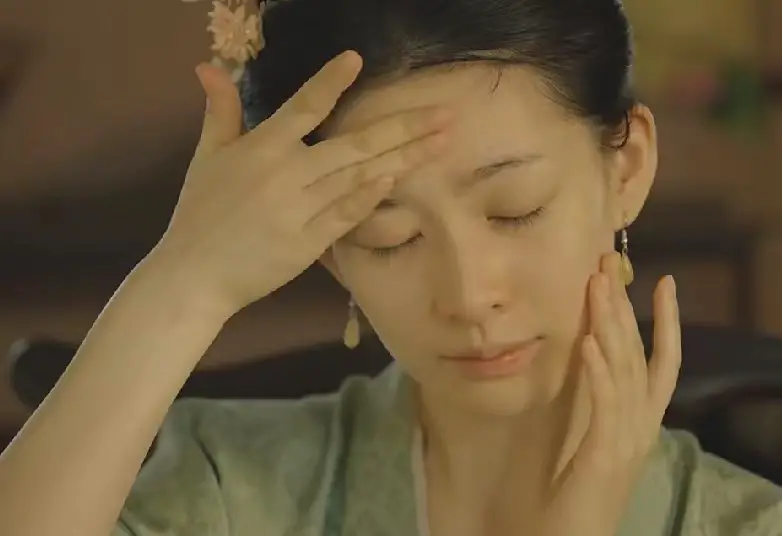
- Mung beans play a significant role not only in Chinese cuisine but also in skincare. They are known for their ability to soothe acne, cold sores, and rashes due to their rich antioxidants and phytonutrients. Mung bean-based face masks and skin treatments are quite popular.
- Tea drinking is a serious affair in China, and different types of tea are chosen for their specific beauty benefits. Green tea, in particular, is renowned for its anti-inflammatory properties and abundant antioxidants, which can have a positive impact on both the skin and overall well-being. Best teapot for tea drinking HERE for Chinese.
- While turmeric lattes have gained popularity in many places, China also uses turmeric topically, especially as a face mask. A homemade mixture of turmeric powder, milk, and honey can provide exfoliating and hydrating benefits in one.
- He Shou Wu, an herbal blend used in traditional Chinese medicine for centuries, is known for its rejuvenating effects on the skin and its ability to thicken and lengthen hair. Adding a 1/4 teaspoon of He Shou Wu to your morning smoothie or tea can bring these benefits.
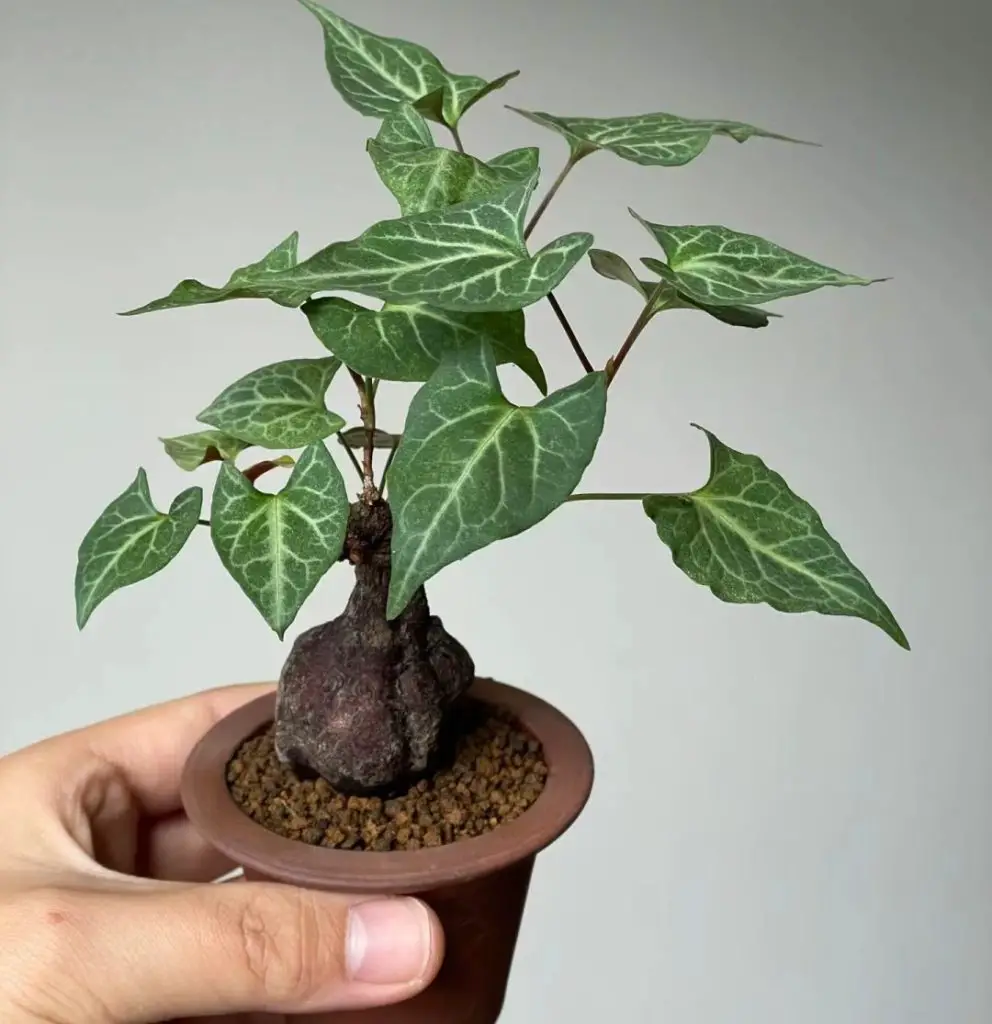
- In China and Korea, rice water has been passed down through generations as a cleansing agent for the skin. It is believed to have brightening and anti-inflammatory properties, and some even claim it helps improve skin texture and firmness.
- Red dates and goji berries, commonly consumed in China, are rich in antioxidants. Chinese model Liu Wen shared that consuming red dates and goji berries in water, tea, or congee helps maintain healthy and glowing skin.
- Acupuncture,these traditional Chinese medicinemethods are used to stimulate acupoints which help in restoring the energy flow of the body. The application of pressure helps in detoxifying the skin. This method also activates the production of natural collagen and helps in fading the scars.
- Saffron helps balance the hormones, improving the overall appearance of your complexion. An overnight mask featuring saffron is a great way to tackle wrinkles, sagging, brown spots, dullness.
- Pearl powder hydrates skin, reduces melanin production, and contains antioxidants. Pearls also add a light-diffusing glow that minimizes imperfections. Add a pearl powder firming mask to your skincare routine if you’re suffering from dryness, brown spots or sun damage.
- Harness the power of acupressure in your skincare routine. Similar to acupuncture, acupressure stimulates the body’s energy flow by removing blockages. By practicing acupressure, you can enhance blood circulation and promote lymphatic drainage. This, in turn, boosts the delivery of oxygen and nutrients to the skin while aiding in detoxification. (Unlike acupuncture, acupressure utilizes touch rather than needles, making it accessible for self-care at home.)
One popular tool for acupressure is the jade roller. Jade is known for its cooling properties, which can help alleviate sinus pain, reduce stress, and diminish puffiness.

Here’s a simple guide on using a jade roller for acupressure:
- Begin at your clavicle and gently roll the jade roller up and down.
- Move up to your neck and continue rolling in an up-and-down motion.
- Switch to a back-and-forth roll, starting from the center of your chin and moving towards your ear. Repeat this motion along your cheekbone.
- Focus on your forehead, performing a vertical roll from the middle of your face towards your temples.
- Flip the roller over and use the smaller attachment for under-eye areas. Roll horizontally towards your temples.
- Finally, roll down your nose using the small side of the roller in a horizontal motion.
Consistently practicing this acupressure massage with the jade roller can bring depuffing and glow-boosting benefits, leaving you with healthier and rejuvenated-looking skin.
China’s beauty traditions and innovations have brought forth a range of skincare practices and ingredients that offer unique benefits. By incorporating these elements into your skincare routine, you can embrace the wisdom of Chinese beauty culture and enhance the health and appearance of your skin.
Chinese Skin Whitening Secrets
- Rice Water: The use of rice water for skin whitening is a well-known Chinese beauty secret. It is believed to have natural brightening properties and can be used as a facial toner or in face masks.
- Green Tea: Green tea is rich in antioxidants and has skin lightening properties. Drinking green tea regularly or using it topically on the skin can help improve skin tone and promote a brighter complexion. (Extra bonus weight loss)
- Licorice Root: Licorice root extract is a popular ingredient in Chinese skincare products for its skin lightening effects. It helps to inhibit the production of melanin, the pigment responsible for skin coloration.
- Pearl Powder: Pearl powder is derived from crushed pearls and has been used in Chinese medicine for centuries. It is believed to promote skin regeneration, even out skin tone, and provide a radiant complexion.
- Mulberry Extract: Mulberry extract is known for its skin lightening properties. It helps to reduce the appearance of dark spots and hyperpigmentation, resulting in a more even skin tone.
- Traditional Chinese Herbal Masks: Traditional Chinese herbal masks, made with various herbal ingredients, are often used to lighten and brighten the skin. These masks are believed to nourish the skin and improve complexion.
- Citrus Fruits: Citrus fruits like lemon and orange are rich in vitamin C, which helps to lighten and brighten the skin. Applying fresh citrus juice or using citrus-based skincare products can help achieve a more radiant complexion.
- White Flowers: Certain white flowers, such as jasmine and lily, are believed to have skin whitening properties in Chinese culture. They are often used in skincare products or as ingredients in face masks.
Remember to consult with a dermatologist or skincare professional before trying any new skincare regimen or ingredients, especially if you have sensitive skin or existing skin conditions.
Chinese Remedy To Tighten Skin
Gua Sha Facial Massage: Gua Sha is a traditional Chinese technique that involves using a flat tool, such as a jade or rose quartz stone, to gently massage the face.
This massage technique helps improve circulation, stimulate collagen production, and tighten the skin over time.
- Start with a clean face: Ensure your face is free of any makeup or dirt before beginning the gua sha session.
- Apply facial oil: Use a few drops of facial oil to provide a smooth surface for the gua sha tool to glide over. This also helps to nourish the skin.
- Warm up the gua sha tool: Contrary to popular belief, warm up the gua sha tool by washing it with warm water or soaking it before and after each use. This helps in maintaining a warm temperature during the session.
- Choose the right tool and shape: Use a gua sha tool with a shape that suits your needs. The heart-shaped part of the tool is commonly used for various techniques.
- Snatch the jawline: Place your fingers on your chin, position the tool flat against your skin, and drag it upwards towards your ears. Continue down the neck. Repeat this motion on both sides.
NEXT STEP presented in a table format:
| Step | Area | Technique | Notes |
|---|---|---|---|
| a. Shoulders | Shoulders | Apply slight pressure and slowly move the tool upwards against gravity. Repeat 5 times. | – |
| b. Neck | Collarbone to Jawline | Place the gua sha tool above your collarbone and slide it up to your jawline. Be gentle and mindful of redness. Avoid pain or marks for more than 10 minutes. | – |
| c. Jawline | Jawline | Hold your chin for support and slide the tool from your chin to below your ears. Keep the tool flat against your skin. Repeat several times. | – |
| d. Cheeks | Smile lines | Press lightly on your smile lines for support and glide the tool with the flat side up to your ears. Repeat on both cheeks. | – |
| e. Nose | Nose | Place your fingers on the opposite side of the nose and use the edge of the tool to slide it up slowly until you meet the brow bone. Be extra gentle around the eye area. | – |
| f. Brow bone | Brow bone | Put two fingers on the center of your brow bone and glide the tool following your brow bone up to your temples. | – |
| g. Forehead | Forehead | Swipe the tool across your forehead, starting from one side and moving towards the center. Repeat several times. | – |
| h. Repeat on the other side | Other side of face | Perform the same steps on the opposite side of your face. | Maintain symmetry by repeating the same motions on the other side of your face. |
- Take breaks and relax: Allow yourself moments of silence during the session to avoid repetition. Take deep breaths and stretch if needed.
- Conclude the session: Once you’ve completed the gua sha routine, take a final deep breath, stretch your body, and enjoy the relaxation. Have a wonderful day!
Remember to be gentle and listen to your skin’s response throughout the gua sha session. If you experience any discomfort or pain, adjust the pressure or technique accordingly.
Chinese Herbs For Skin Beauty Aging
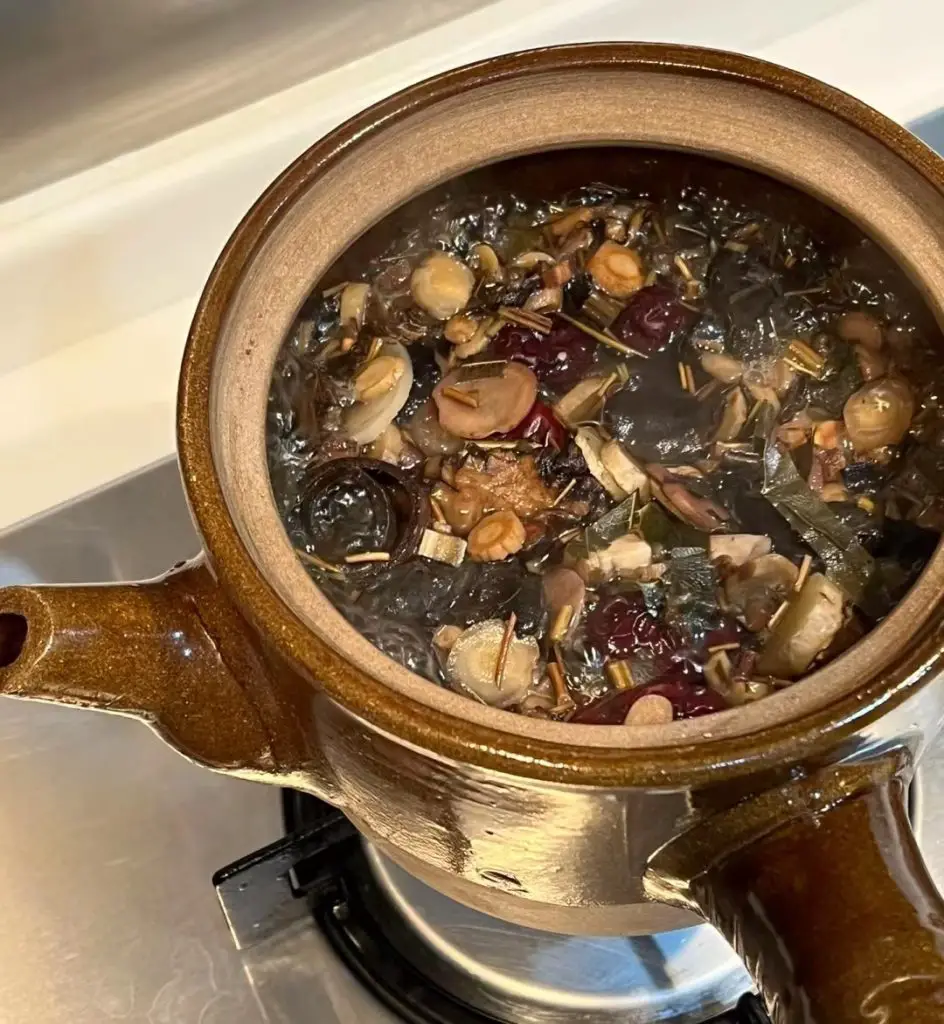
The spleen and lung play a vital role in nourishing the skin. Aging and a sluggish metabolism can lead to malnourished skin, causing issues like dullness, wrinkles, and dryness. Traditional Chinese medicine suggests improving skin texture and elasticity by replenishing blood circulation and nourishing yin for moisture.
Herbs are often used to help keep the lungs, kidneys, and spleen working properly, improve blood production, and nourish vital energy in the body. Some common herbs used for these purposes include:
- Ginseng
- Solomon’s seal rhizome (huang jing)
- Wolfberry fruit
- Gynostemma pentaphyllum (jiao gu lan)
- Ginkgo leaf
- Dates
- Raspberry fruit
- Angelica root
- Fleece flower root
- Fragrant Solomon’s seal rhizome (yu zhu)
- Black sesame
- Ganoderma lucidum (ling zhi)
- Siberian ginseng (ci wu jia)
- Pollen
These herbs also help to maintain soft, shiny, and clear skin. Some combinations of herbs are used to help the body get rid of waste products that have built up over time. For example, giant typhonium rhizome (bai fu zi), peach kernel, dahurian angelica root (bai zhi), Ledebouriella root (fang feng), and Biond Magnolia flower (xin yi) are used to address specific beauty concerns.
Traditionally, when people wanted to use herbs for a long time, they would consult a doctor who would create a customized herbal prescription. A significant amount of herbs (enough for at least 2 months) would be prepared as a concentrated liquid.
This liquid would then be strained and cooked with honey to make a syrup or gel-like extract that is easy to take and tastes sweet. These extracts are known as “enriching soft extracts.”
Chinese Beauty Secrets Hair
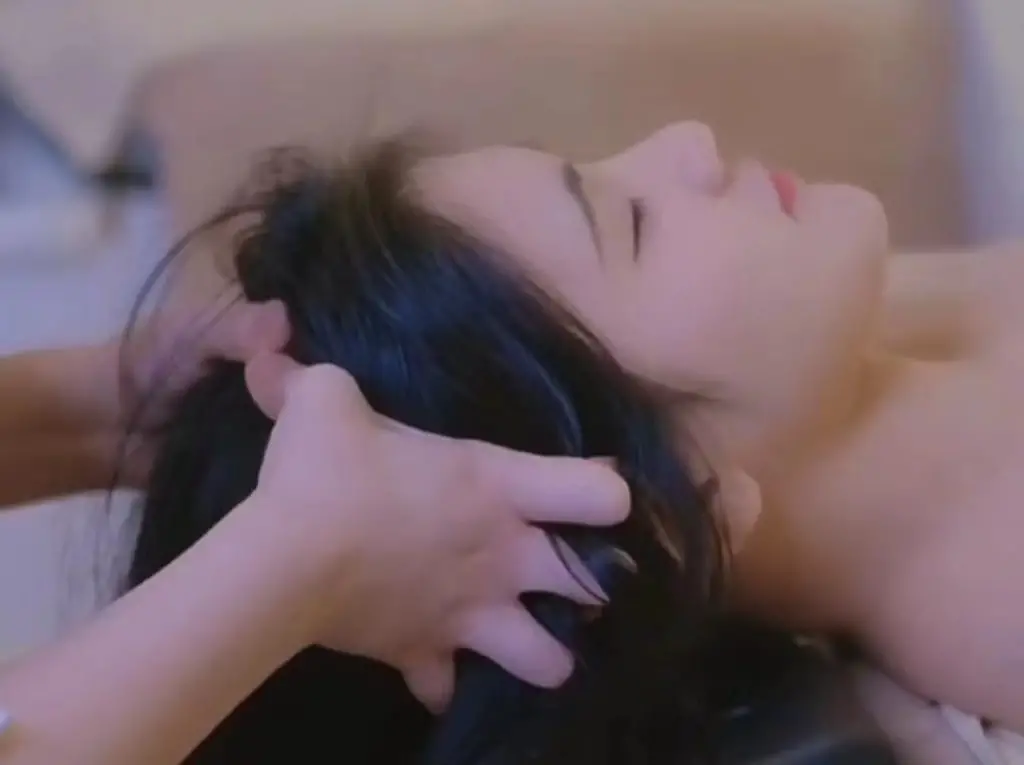
Discover the ancient secrets of Chinese hair care to keep your scalp and hair healthy. While we may not always realize it, our scalp ages just like our skin does. As it ages, it becomes drier and loses some of its protective barrier against bacteria, yeast, and other inflammatory conditions.
By properly stimulating our scalp, we can slow down or even prevent hair loss. It’s important to remember that a healthy scalp also provides a strong foundation for our facial appearance.
Let’s explore the art of scalp massage, a technique that improves oxygen and nutrient-rich blood flow to the scalp and hair follicles. You can easily perform scalp massage at home using simple alternatives like a hairbrush, a spoon, or even your fingertips.
Scalp massage involves three simple techniques: tapping, scraping or brushing, and pressing:
- Begin by tapping your entire scalp gently using your chosen tool or fingertips.
- Proceed to scrape or brush your scalp from your forehead to the back of your head, repeating this motion ten times.
- Then, scrape or brush your scalp from your ears to the crown of your head on both sides, again repeating the motion ten times.
- Lean your head forward and scrape or brush your scalp from the back of your neck to the front of your head, ten times.
- Next, scrape or brush your scalp from each side of the back of your neck to the front of your forehead, ten times.
- Lift your head back up and use a curved portion of the tool or your fingertips to stimulate your hairline, repeating this ten times.
- Finally, scrape or brush from the neck to the shoulders and back. For example, scrape or brush from the left side of the top of your neck to the left side of the end of your shoulder. Then, scrape or brush from the top of the back of your neck under the skull, all the way down to the back as far as you can reach. Repeat this motion ten times.
The goal of scalp massage is to leave you feeling relaxed and refreshed. With regular practice, you will notice healthier-looking skin and hair as the benefits accumulate.
Me personally use comb to massage my scalp like one minute per day. It helps! 💗
FAQs:
How is Chinese skin so flawless?
Chinese skin is often considered flawless due to various factors such as genetics, diet, skincare practices, and cultural emphasis on skincare. A healthy lifestyle, including a balanced diet, adequate hydration, and diligent skincare routines, contributes to maintaining the health and appearance of the skin.
What did the Chinese use to prevent wrinkles?
Traditional Chinese remedies for preventing wrinkles include the use of natural ingredients such as herbal extracts, botanical oils, and tonics. Commonly used ingredients include ginseng, pearl powder, green tea, and various herbal concoctions known for their anti-aging properties.
Which Chinese tea is best for skin?
Green tea is often considered the best Chinese tea for skin health. It is rich in antioxidants, particularly catechins, which help protect the skin from damage caused by free radicals. Green tea also has anti-inflammatory properties and can contribute to a healthier complexion.
What Chinese eat for glowing skin?
The Chinese diet emphasizes consuming a variety of fresh and nutrient-rich foods for overall health, which can contribute to glowing skin. Common components include fruits, vegetables, whole grains, lean proteins, and seafood. Traditional Chinese medicine also recommends specific ingredients such as goji berries, Chinese yam, lotus seeds, and various herbal soups for nourishing the skin.
Why is Chinese hair so thick?
The thickness of Chinese hair can be attributed to various factors, including genetics and overall hair care practices. Chinese individuals often have thicker hair shafts, which contribute to the appearance of thicker hair. Additionally, traditional Chinese hair care practices focus on maintaining scalp health and using natural remedies such as herbal extracts and oils to nourish and strengthen the hair.
